These Staghorn Fern Varieties look super cool with their quirky foliage and you can use them as a hanging art piece at home!
Staghorn Fern Varieties—Their otherworldly antler-shaped fronds and intricate growth patterns can turn any space into a living art gallery!
Staghorn Fern Varieties
1. Common Staghorn Fern
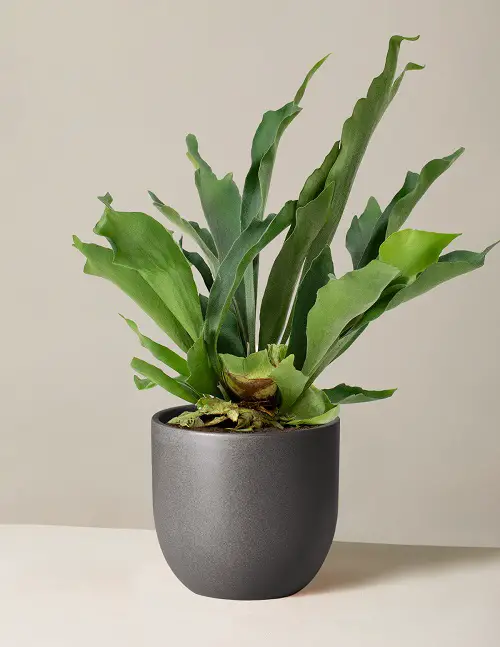
Botanical Name: Platycerium bifurcatum
The antler fronds of the Common Staghorn Fern are usually bright green and are shaped like the antlers of a stag, thus the name. They can grow in various directions, adding a dramatic, sculptural element to the plant.
2. Elkhorn Staghorn Fern

Botanical Name: Platycerium superbum
The antler fronds are the real showpieces of the plant, extending outward and upward in a branching pattern that resembles elk antlers.
3. Antler Staghorn Fern
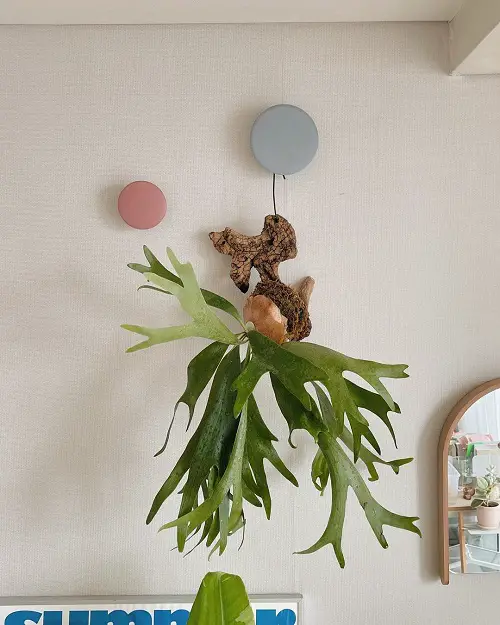
Botanical Name: Platycerium alcicorne
Platycerium alcicorne has antler-like, narrow, curving fronds. Native to New Guinea and the neighboring islands, and has exceptional cultural value to the locals.
How to Grow Staghorn Fern on Anything
4. Giant Staghorn Fern
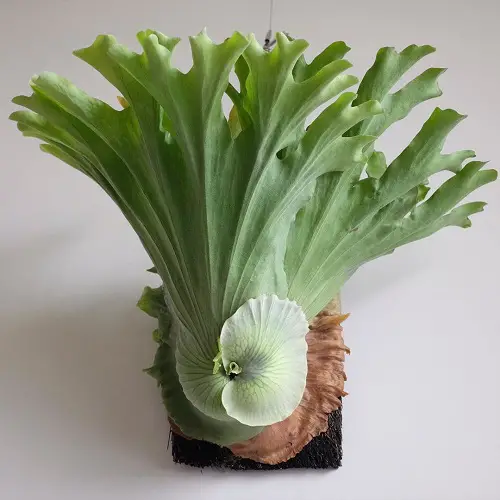
Botanical Name: Platycerium grande
The antler fronds can grow to an astonishing length, often exceeding 5 feet in optimal conditions. These fronds are multi-lobed and can have both broad and narrow segments, giving the plant a complex, layered appearance.
5. Slender Staghorn Fern

Botanical Name: Platycerium veitchii
Originating from New Guinea, this fern is famous for its thin and graceful fronds. It can be an excellent choice for mounting on wooden boards or hanging baskets which allows its fronds to cascade downwards.
6. Australian Staghorn Fern
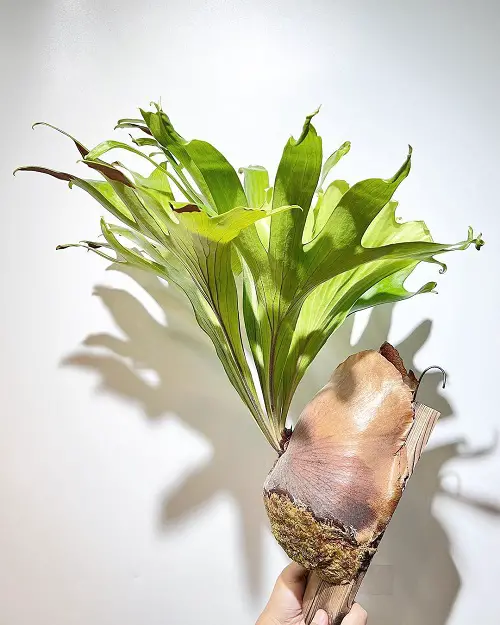
Botanical Name: Platycerium hillii
It has two types of fronds: the “shield” and “antler”. The shield fronds are round and flat which serves as an anchor to the host surface, while the antler fronds give the plant its signature deer-antler appearance.
7. Wanda Staghorn Fern
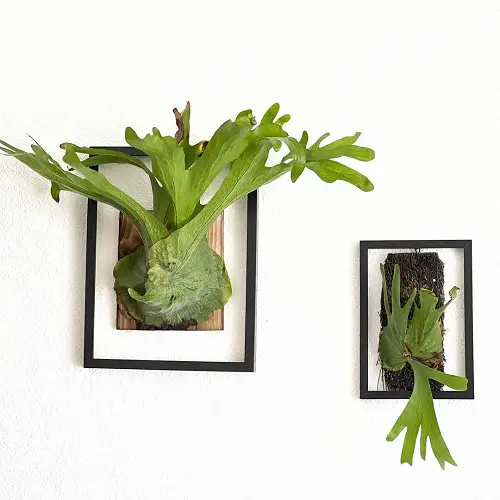
Botanical Name: Platycerium wandae
The Wanda Staghorn Fern shares many characteristics with its parent species, such as slender fronds, however, the Wanda variety is distinguished by its slightly different growth pattern and potentially smaller size.
Learn how to grow staghorn fern in this detailed article
8. Madagascar Staghorn Fern

Botanical Name: Platycerium madagascariense
The Madagascar variant features distinct lobed fronds resembling multiple extended fingers. These lobes radiate out from a central point thus creating a truly unique visual spectacle.
9. Dutch Staghorn Fern

Botanical Name: Platycerium bifurcatum ‘Netherlands’
Like its relatives, the Dutch Staghorn Fern boasts two types of fronds: the anchoring “shield” fronds and the fertile “antler” fronds. However, its antler fronds are often more robust and deeply lobed which provides a more dramatic visual impact.
10. Crown Staghorn Fern
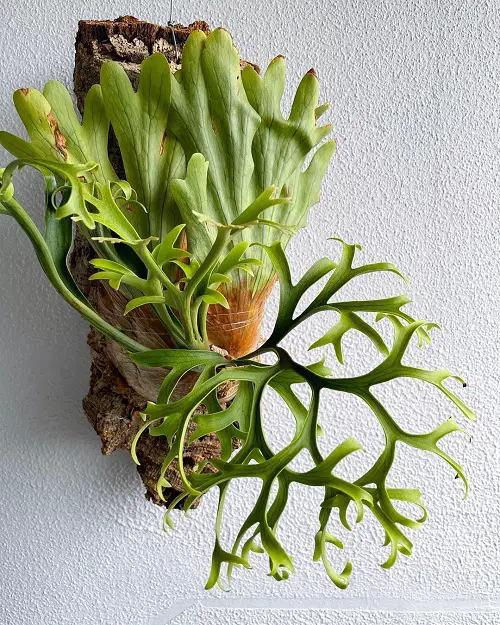
Botanical Name: Platycerium coronarium
What sets the Crown Staghorn Fern apart are its fertile fronds which radiate outward in a crown-like pattern. The fertile fronds often showcase lighter-colored spore patches on their undersides.
11. Miniature Staghorn Fern

Botanical Name: Platycerium ellisii
This fern presents a compact size and intricately divided fronds. Indoor gardeners often cherish its charm, allowing them to introduce elegance into more confined living areas.
Here are some of the best hanging ferns here
12. Ridley’s Staghorn Fern
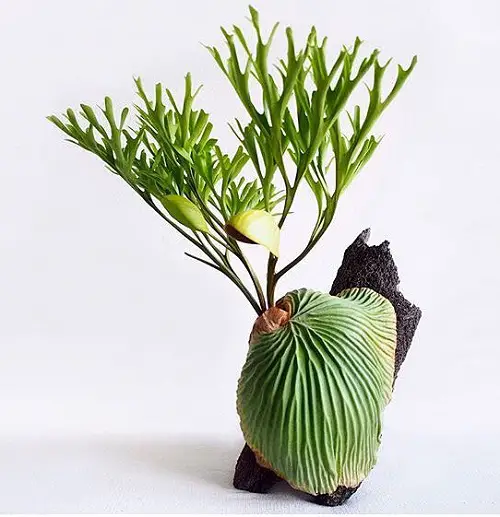
Botanical Name: Platycerium ridleyi
The shield fronds act as the anchoring base and are typically brownish-green. The antler fronds, however, are where this plant truly shines. These fronds can be extremely elongated, sometimes resembling multiple elongated fingers reaching outward.
13. Triangle Staghorn Fern
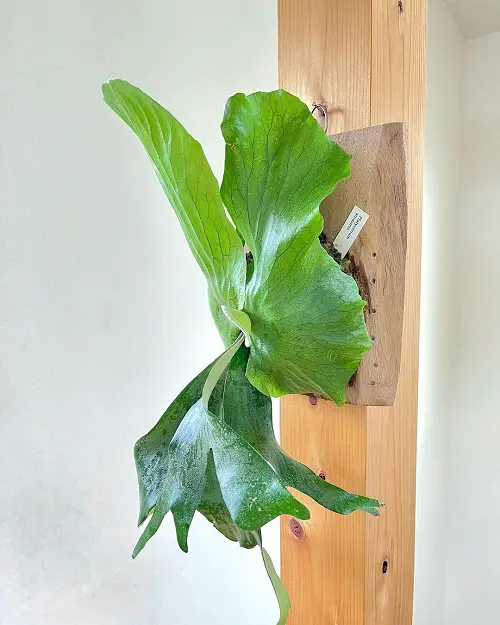
Botanical Name: Platycerium stemaria
Unlike the more common antler-like fronds seen in other Staghorn Ferns, this variety features fronds that form a near-perfect triangle. The symmetrical nature of these fronds adds a geometric aesthetic that’s both modern and natural.
14. American Staghorn Fern

Botanical Name: Platycerium andinum
Its shield fronds serve as an anchor, attaching the plant to its host or growing medium, and are generally a pale brown or tan color. The antler fronds are the show-stoppers, extending outward and resembling the antlers of a deer or elk.
15. Elephant Ear Staghorn Fern
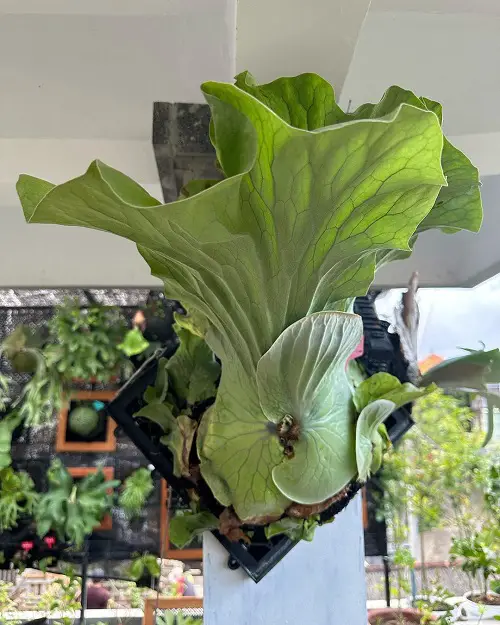
Botanical Name: Platycerium elephantotis
What sets this fern apart is the shape and size of its antler fronds. True to its name, these fronds resemble the ears of an elephant—large, broad, and rounded. They can grow incredibly large, sometimes reaching lengths of up to 3 to 5 feet.
45 Fern Tattoo Meaning and Ideas
Quick Care Tips for Different Staghorn Fern Varieties
- The staghorn fern varieties prefer bright but indirect sunlight so position them near an east or north-facing window.
- Maintain moderate humidity levels (around 50-60%) by misting the fern regularly, especially in dry indoor environments to prevent the fonds from drying out and turning brown.
- Feed the staghorn varieties with a balanced liquid fertilizer every 2-3 months during the growing season (spring to fall) to promote healthy growth.
- Rotate the fern every few months to ensure even exposure to light and prevent lopsided growth.
- Remove any dead or damaged fronds by cutting them off at the base as this encourages new growth and keeps the plant looking tidy.
- During the winter months, reduce watering and fertilizing to allow the plant to enter a semi-dormant state.
- Remount or repot the staghorn fern every 2-3 years as they can outgrow their mounting surface or pot over time.


